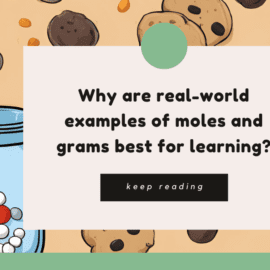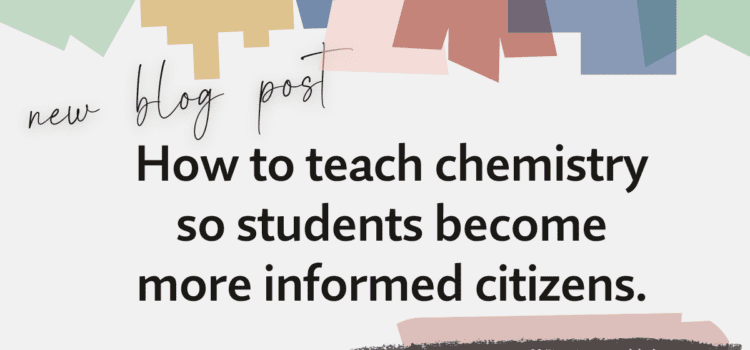
Students take chemistry for a variety of reasons. As teachers, we have a variety of goals as to what the students know once they are done with our course. One of my goals is for chemistry students to learn enough about the discipline to become more informed citizens.
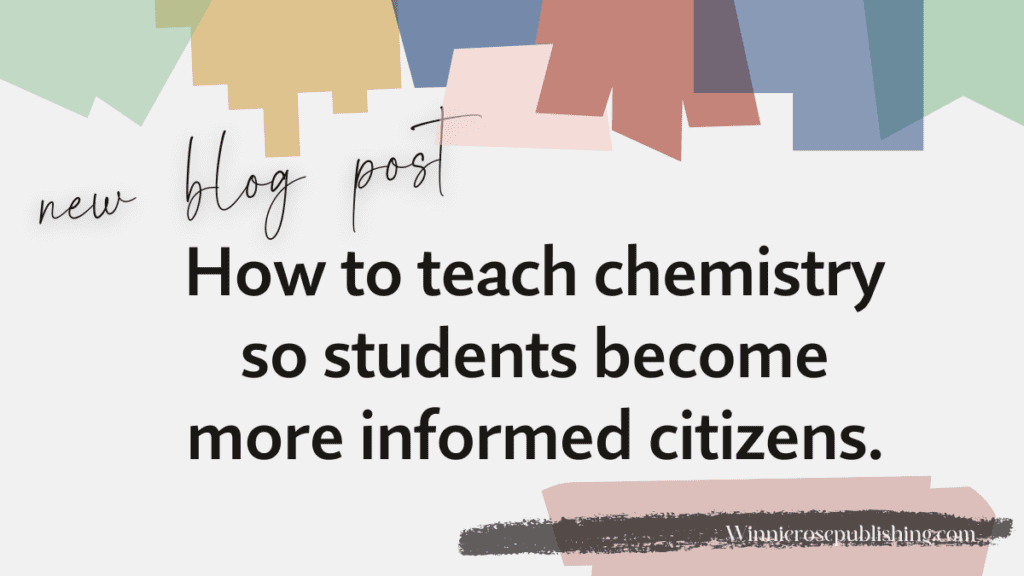
In America, scientific literacy has been low for decades. While we have access to lots of technology, our understanding of the underlying science has been largely missing. As our world becomes more complex, and technology has a larger and larger presence in our lives, the necessity to know some science is clear.
Science Affects Quality of Life
Pollution from factories affects air quality and water quality. Pollution from cars and factories contributes to acid rain which in turn damages aquatic life, ruins crops, and destroys stone statues.
We are always searching for abundant sources of cleaner and cheaper energy. We are constantly developing new foods and consumer products with additives, flavors, and colors that improve the function or use of the products.

These examples are all based on science. A better understanding of chemistry can help a person recognize the cause-and-effect relationships between pollution and damage to aquatic life. We can better identify the additives in processed foods as we are deciding which products to buy.
Improving Science Literacy
As our students reach adulthood, we want them to understand the environmental issues affecting us and how human choices relate to them. We would like them to make better choices in the products they buy to feed their families as they understand the nature of the additives in processed foods. We would like them to recognize when there may be false claims in advertising for cleaning products with new fragrances, bleach alternatives, or enzymes.
An educated and informed citizen is the goal for sure. We have decided as a society, that students need exposure to literature, history, economics, mathematics, etc. Science is an important topic on the list.
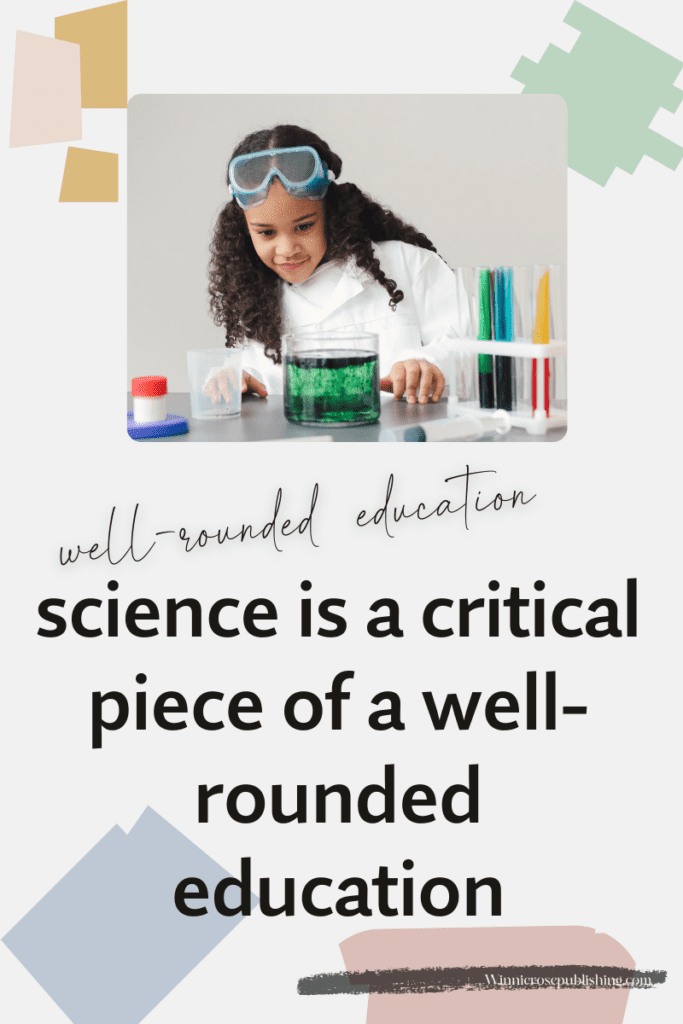
While all of the above is important, there is plenty of chemistry happening in everyday life that should be more interesting when one has some understanding of what is going on at the molecular level.
Places in the Content to Include Real Examples
Acid-base concepts are everywhere in foods and cleaning products. Molarity is present in cleaning products and medical products. Gas laws are found in their car tires and birthday balloons.
When teaching about ionic vs covalent compounds you can use examples of compounds that are present in the students’ lives. There is no need to have a list of random compounds with no connection to their reality. I make it a point to use as many examples as possible that are compounds in everyday life, and I mention the connection to everyday life as often as I can.
In the gas laws topic I try to make every example in lecture and every example on a worksheet about a real situation. I have never liked the random picture of a piston with a moveable plunger that allows me to change the volume and recalculate the pressure. I have never seen one of these pistons in my real life. If the examples are connected to things that can be easily observed, the concepts should connect together in the students’ minds more easily.
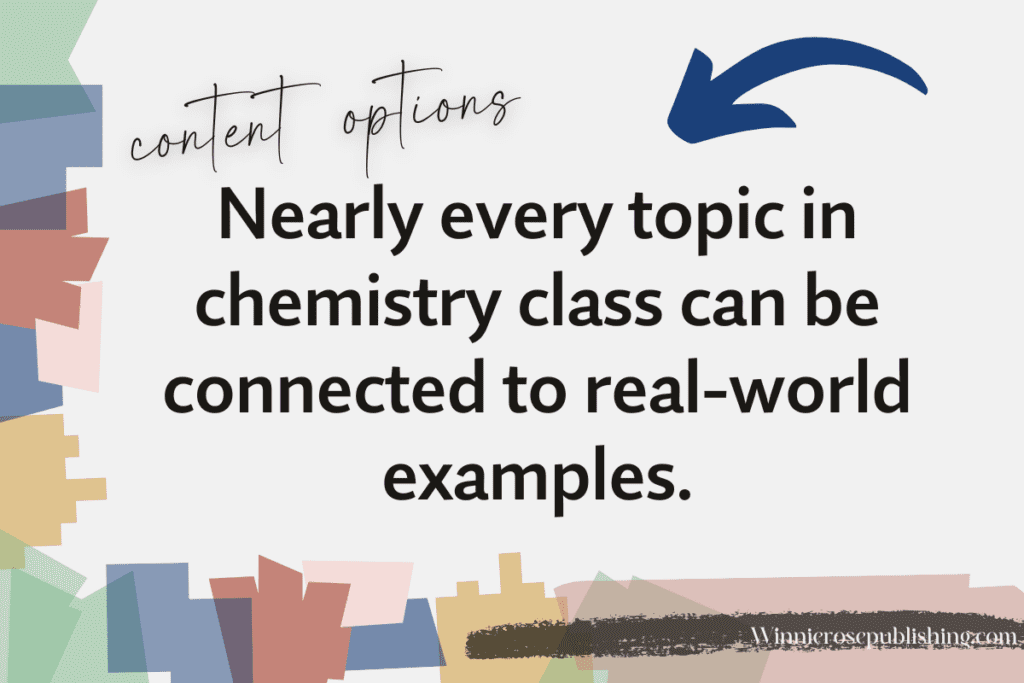
More Topic Examples for Connection to Everyday Life
In the acid-base section, why not have every example be a real one? They can understand the relationship between the pH of your stomach acid and why it burns your throat when you vomit. Meanwhile, it is clear that vinegar is a weaker acid based on personal experience with pickle juice. In the lab, the experiment could involve a titration of pickle juice.
In the chapter on energy, thermodynamics, and phase changes, there are many demonstrations and experiments available that use ice. Students can relate to ice, and how a sunny day results sometimes in the sublimation of the solid ice, rather than melting. It is possible to calculate the amount of ‘ice melt’ product that is needed for a certain amount of sidewalk ice.
When discussing colligative properties, I always calculate how much salt it takes to raise the boiling point of water enough that the axiom your grandmother told you about pasta cooking faster when the water is salted becomes true. Spoilers – it takes about a cup of salt in 2 quarts of water to raise the boiling point of the water by even one degree. So I am sorry to say, your grandmother was incorrect.
There are lots of everyday examples related to the topic of solutions and polarity. Nearly every product in the cleaning and personal care aisles of the store is sold as solutions. When a product label says ‘more concentrated’ you and your students could actually determine if that is true. When discussing polarity, you can explain why Italian salad dressing always needs to be shaken, but ranch dressing does not. Many products are sold as a concentrate that must be diluted with water before use. I feel that lends itself really well to dilution calculations and molarity.
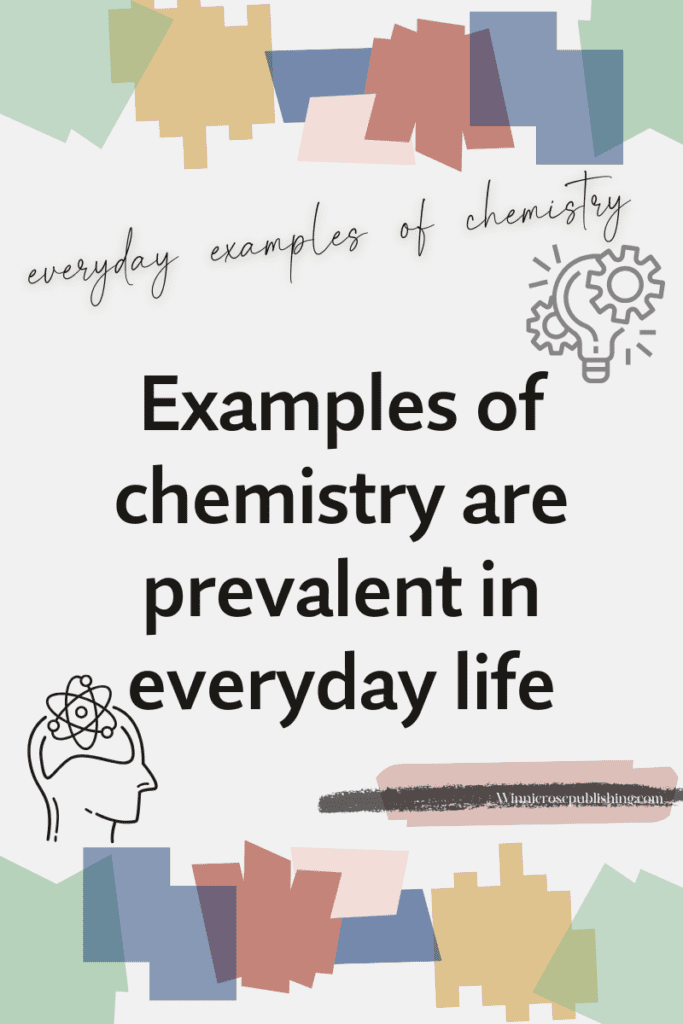
When I was a student we learned what we were told to learn, and we generally did not question why. Teachers generally did not try to connect the content with real-world things. If material or topic choices were abstract and felt disconnected to our everyday experiences, that was just a fact of life.
Student Engagement Helps Create More Informed Citizens
We could debate whether that methodology was good for me, or if I survived despite it. The fact is that society and culture have changed. As the world has gotten more complex, adolescence is now longer than it used to be, and there is more to learn to become a functioning adult. Instead of assuming that students will learn simply because we tell them that they must, why wouldn’t I try to connect with their everyday lives as much as possible? Wouldn’t I want the students to be as interested and enthusiastic as possible? Wouldn’t they be more interested in learning if they could immediately see an application of the concepts?
As a citizen, I want my neighbors to have learned some chemistry so they know what lawn chemicals are doing. I want them to know that pouring turpentine and paint down the drain is a bad idea. They need some understanding about the new factory that had lax standards on polluting emissions when they are arguing at the city council meeting. I want them to understand the value of chemistry when they are talking about a proposal related to science classes at a school board meeting.
Science Citizen Benefits
The benefits of improving science literacy amongst the public through good science education has been well described. There are many projects using crowd-sourcing for gathering science data, and this requires citizens with good science backgrounds and understanding. The following articles are good examples.
- Teaching Science in the Context of Societal and Personal Issues – National Science Teachers Association
- CitizenScience.gov
- Science Education for Responsible Citizenship – European Science Education Research Association
If I want a neighborhood filled with informed citizens, then I need to teach my chemistry class in a way that leads students to better understand the world around them. I cannot assume that they will make the connections between what they learn and how it relates to their lives. As a teacher, I need to be overt and make those connections obvious. I need to choose as many examples, lab experiments, and activities that are real examples as I possibly can.
What Next? Finding Resources to Help your Students Become Informed Citizens
Are you looking for guidance on how exactly to include all these real-world examples? Do you wish you had the time to come up with the examples to use for each concept, yet knowing that the spare time will never come? Are you just not sure where to start?
Never fear, here are some options.
- An activity that uses the actual recipe for oatmeal cookies to determine the number of moles and molecules of various compounds in a single cookie.
- An activity that calculates the value of a dollar bill made of a single layer of gold atoms – uses atomic radius, geometry, and unit conversions.
- A set of task cards that calculates solution concentration of many everyday items and consumer products – uses mass percent, volume percent, and molarity.
- A set of task cards that focuses on the percent composition of familiar compounds, such as caffeine, salt, and sugar.
When students encounter real examples in your class they will be more interested in learning. In turn, they will be more engaged and willing to learn more. Finally, they will hopefully learn enough to be informed citizens, good neighbors, and good stewards of our earth.
Want to read more about the value of real-world activities in your classroom? Check out these posts. How real-world activities improve student learning. Why are real-world examples of moles and grams best for learning?


